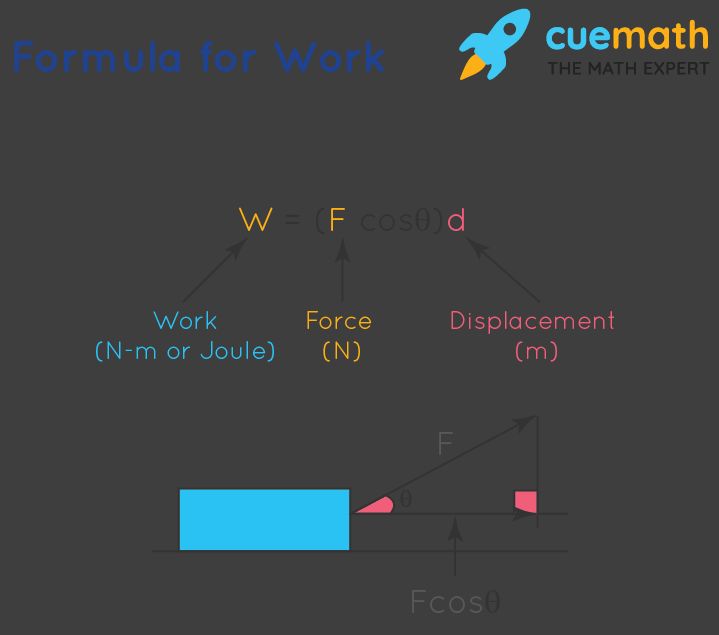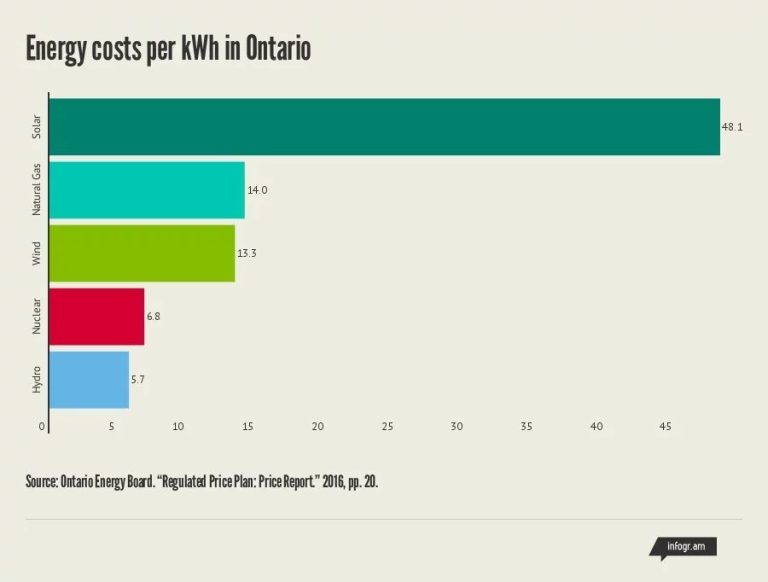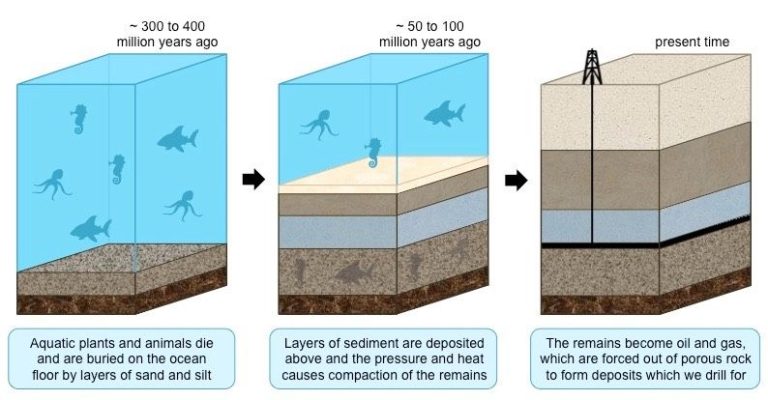What Is The Formula For Force And Energy Of Motion?
Force and energy are fundamental concepts in physics that describe the causes of motion. Force is anything that can change the motion of an object by applying a push or pull on it. Energy is the ability to do work and cause change. Understanding force and energy is crucial for explaining phenomena in the physical world and developing technology like transportation and electricity.
Knowing how forces influence motion allows us to predict the movement of objects from satellites orbiting Earth to vehicles traveling on roads. The effects of forces are visible everywhere – birds flying, balls bouncing, and magnets attracting. Engineers apply force calculations when designing structures and machines. Sports scientists study force and motion to improve athletic performance.
Energy powers all processes and activities. The sun radiates energy that sustains life on Earth. Our bodies convert chemical energy from food into motion. Electricity gives us light, heat, and powers technology. Engineers and scientists work to harness forms of energy for human use. Conservation of energy describes how it can change form but is never lost.
In summary, comprehending the basics of force and energy is key for explaining the physical world, solving problems, and developing innovations that elevate human life. The foundations of motion underlie many disciplines. Mastering these foundational physics concepts opens doors to manipulating our environment for the betterment of society.
Newton’s Laws of Motion
Isaac Newton’s three laws of motion are the basis for classical mechanics. They describe the relationship between motion, forces, and energy.
First Law – Law of Inertia
Newton’s first law states that an object at rest stays at rest and an object in motion stays in motion with the same speed and in the same direction unless acted upon by an unbalanced force.
This law is also known as the law of inertia. Inertia is the resistance of any physical object to any change in its state of motion. An object will remain at rest or continue moving unless a force interrupts its motion.
Second Law – F=ma
Newton’s second law states that the rate of change of momentum of an object is directly proportional to the force applied and takes place in the direction of the applied force. This law can be expressed mathematically as F = ma, where F is force, m is mass, and a is acceleration.
This means that an object’s acceleration depends directly on the net force acting on it and inversely on its mass. The greater the force, the greater the acceleration. The greater the mass, the smaller the acceleration.
Third Law – Equal and Opposite Forces
Newton’s third law states that for every action there is an equal and opposite reaction. This means that forces always occur in pairs. If object A exerts a force on object B, then object B exerts an equal but opposite force back on object A.
These two forces balance each other, so the net force on the system is zero. This law helps explain the origin of forces and the cause and effect relationship between forces.
Work and Energy
In physics, work is defined as the amount of force applied over a distance. Specifically, work (W) is equal to the force (F) multiplied by the distance (d).
W = F * d

Work is done when a force causes an object to move in the direction of the force. For example, lifting a box from the floor does work against the force of gravity. Pushing a box across a floor does work against the frictional force. However, no work is done if the force does not cause movement, such as holding a box still or pushing against an immovable wall.
Work transfers energy from one object or system to another. According to the work-energy theorem, the net work done on an object is equal to its change in kinetic energy. As work is done, energy is transferred to the object, increasing its kinetic energy and speed.
There are two main types of mechanical energy: kinetic energy and potential energy. Kinetic energy is energy of motion. The kinetic energy of an object depends on its mass and velocity. Potential energy is stored energy. Gravitational potential energy depends on an object’s mass and height in a gravitational field. Elastic potential energy is energy stored in a stretched or compressed spring or other elastic material.
Kinetic and potential energy can convert back and forth between each other. For example, an object held high has potential energy that can turn into kinetic energy as it falls. The kinetic energy of a bouncing ball converts to potential energy as the ball compresses, then back to kinetic energy as the ball springs back up.
Power
Power is defined as the rate at which work is done or energy is transferred. The standard formula for power is:
P = W/t
Where P is power, W is work, and t is time. This formula shows that power depends on the amount of work performed and the time it takes to perform that work. The more work done in a shorter amount of time, the greater the power.
Power is closely related to work and energy. Work involves applying a force over a distance, which transfers energy. Power describes how quickly this energy transfer is occurring. For example, lifting a heavy box to a high shelf requires work and transfers energy, but doing it slowly utilizes less power than lifting the box quickly.
The units for power are typically watts (W) or horsepower (hp). One watt equals one joule of work performed per second. Horsepower is commonly used to describe the power output of engines and motors.
Conservation of Energy
The law of conservation of energy states that the total mechanical energy of an isolated system remains constant. In other words, energy can neither be created nor destroyed – it can only be transformed from one form to another. For example, a ball dropped from a height has gravitational potential energy that transforms into kinetic energy as it falls. When the ball hits the ground, the kinetic energy is transformed into heat and sound energy. However, the total amount of mechanical energy before and after the drop remains the same.
Other examples of energy transformation in mechanical systems include:
- A pendulum swinging converts kinetic energy into gravitational potential energy and back again in a periodic motion.
- A compressed spring contains elastic potential energy that is converted into kinetic energy when released.
- Friction converts kinetic energy into heat energy.
- An object accelerated by a force gains kinetic energy equal to the work done by the force.
The conservation of energy is a fundamental concept in physics that can be applied across many mechanical systems to analyze and predict motion and energy transformations.
Impulse and Momentum
Momentum is a measurement of motion and refers to the quantity of motion that an object has. It depends on two variables – the object’s mass and its velocity. Mathematically, momentum is calculated by multiplying the mass and velocity of an object.
Impulse refers to a force acting over time to cause a change in momentum. It is calculated by multiplying the average force acting on an object by the time interval during which the force acts. Impulse and momentum are closely related.
The impulse-momentum theorem states that the impulse applied to an object equals its change in momentum. So if an unbalanced external force acts on an object for a certain time, it will cause the object’s momentum to change. This change in momentum will be equal to the impulse imparted.
In an isolated system with no external forces, the total momentum remains constant. This is known as the law of conservation of momentum. During collisions between objects, the total momentum before and after the collision remains the same if there are no external forces. Momentum is only transferred between the objects involved in the collision.
Collisions
Collisions occur when two or more objects interact through impact. The total momentum and kinetic energy before and after the collision remains the same, according to the laws of conservation. However, the momentum and kinetic energy can transfer between colliding objects during the collision.
There are two main types of collisions:
Elastic collisions – Collisions in which both momentum and kinetic energy are conserved. The total kinetic energy of the system before and after the collision remains the same. An example is billiard ball collisions on a frictionless surface.
Inelastic collisions – Collisions in which only momentum is conserved. Some kinetic energy is converted to other forms like heat, sound, or potential energy during the collision. An example is a car collision that crumples the metal.
During perfectly inelastic collisions, the colliding objects stick together after impact. All kinetic energy is converted to other forms. Momentum is still conserved, but kinetic energy is not.
Partially inelastic collisions fall between elastic and perfectly inelastic. Some kinetic energy is lost, but the objects do not stick together.
Knowing information about the objects like their masses and velocities before the collision allows you to calculate the new velocities after the collision. Conservation of momentum and kinetic energy equations can determine the momentum and energy transfers between colliding objects.
Forces
Forces are interactions between objects that can cause changes in motion. There are several different types of forces:
- Gravity – The attractive force between objects with mass. Described by Newton’s Law of Gravitation.
- Friction – The force resisting motion between surfaces in contact. Static friction resists the start of motion. Kinetic friction acts to slow down motion already happening.
- Tension – The pulling force transmitted axially by a string, rope, cable or wire.
- Normal – The force perpendicular to a surface. Often paired with friction.
- Drag – The force opposite the relative motion of an object through a fluid. Depends on shape, speed, fluid density.
The main equation for forces is Newton’s Second Law:
Fnet = m * a
Where Fnet is the net force, m is the mass of the object, and a is the acceleration. This shows that a net force causes an object to accelerate.
Forces are often analyzed using free body diagrams. These diagrams isolate an object and draw all forces acting on it. The diagrams help visualize the forces and solve equations using Newton’s Laws.
Applications
The physics of motion and energy have many practical applications in the real world, from vehicles to spacecraft. Here are some examples:
Automobiles
Cars apply the principles of motion and energy in their engine, transmission, wheels, brakes, and more. The engine generates power by burning fuel, the transmission and wheels apply torque to propel the vehicle. The brakes use friction to reduce velocity and dissipate kinetic energy as heat. Concepts like momentum, impulse, inertia, and friction all factor into automobile design and performance.
Aircraft
Airplanes rely on the principles of physics for lift and thrust. The shape of the wings generates lift force when the airplane is moving fast enough. Jet engines provide forward thrust to overcome drag and propel the plane. Control surfaces allow the pilot to orient the lift and thrust to control direction and attitude. The mass and velocity determine the kinetic energy and momentum of the aircraft.
Rockets
Rockets exemplify Newton’s third law by ejecting propellant backwards to produce thrust forwards. The impulse from each rocket burn provides changes in momentum to propel the rocket. Energy conservation ensures the total energy of the rocket and its exhaust remains constant. The force of gravity and atmospheric drag must be overcome by the thrust to launch the rocket into space.
These are just a few examples of how the physics of motion and energy apply to real-world engineering across many fields.
Conclusion
In this article, we explored the key formulas related to force and motion. A quick summary:
- Newton’s Second Law of Motion states that Force = Mass x Acceleration (F = ma)
- Work is calculated by Force x Distance (W = Fd)
- Power is Work over Time (P = W/t)
- Kinetic Energy is equal to 1/2 x Mass x Velocity squared (KE = 1/2mv^2)
- Momentum is calculated by Mass x Velocity (p = mv)
Understanding the physics of force and motion allows us to predict the behavior of objects in the physical world. It helps explain how planes fly, how rockets propel into space, and how sports equipment like baseball bats and golf clubs work.
Engineers apply these formulas when designing vehicles, athletes use the principles of momentum in their training, and physicists continue uncovering new insights into the nature of force and energy. While the basic formulas provide a foundation, there are still many mysteries to uncover about motion, gravity, and the fundamental rules governing our universe.
By starting with the key equations presented here, students and curious minds can begin their journey into the fascinating world of physics. Force and motion permeate our everyday lives, so taking the time to understand these concepts leads to a deeper appreciation of the world around us.




